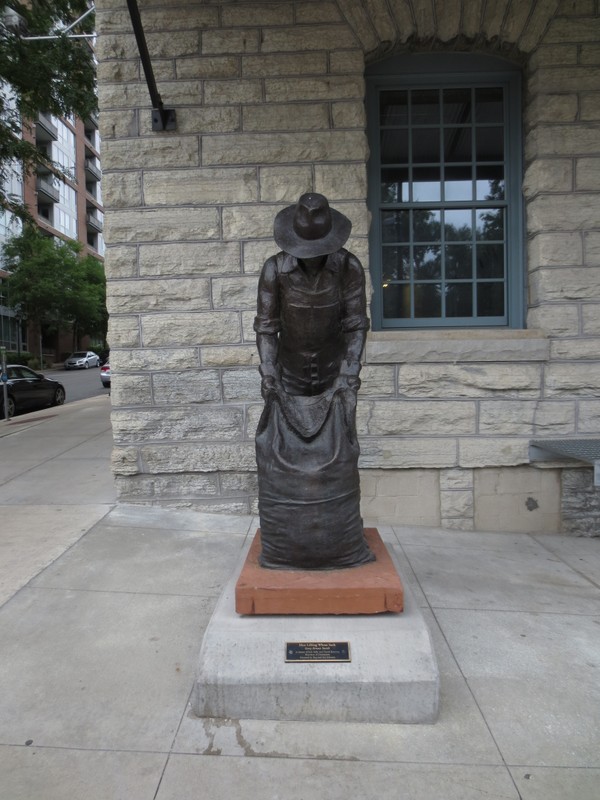The Workers of the Mill District
Introduction
Text-to-speech Audio
Images
"Man Lifting Wheat Sack" by Gary Ernest Smith

"Man Lifting Wheat Sack" by Gary Ernest Smith

Washburn Crosby Flour packing crew, 1888
.jpg)
Backstory and Context
Text-to-speech Audio
The city of Minneapolis grew as the flour milling industry expanded. In 1870, the population of Minneapolis was 13,000 and just 20 years later it had grown to nearly 165,000, as newcomers arrived from different parts of the United States and from Europe for work. Flour milling also relied on other industries and forms of labor including: farming, bag making, barrel making, railroad works, and iron works.
What was it like to work in a mill?
It was difficult work. In the late 1800s and early 1900s, most mill workers were on the job for 12 hours a day. Regardless of what a worker did at the mill (flour packing, loading flour on boxcars, nailing or sewing bags for shipping) there were job hazards:
- Strenuous labor. Loading 200 pound barrels or 100 pound sacks of flour often led to back injuries.
- Railroad accidents. The workers who unloaded wheat and loaded flour were near trains where injury was common and death was possible.
- Loss of fingers. It wasn’t uncommon for a worker to lose a finger in a machine accident, or through a cut becoming infected.
- Suffocation or Drowning. Less common, but there are reports that describe workers who died by drowning in the water that powered the canals, or even suffocating after falling in wheat storage.
The most common hazard was lung damage. With flour dust in the air and no masks, many workers developed bronchitis or “miller’s cough,” a kind of occupational asthma. They lived with permanent breathing difficulties.
With flour dust, there was also a risk of a flour dust explosion.In 1878 the first Washburn A Mill exploded and killed 18 workers in the Mill district, but such accidents were (thankfully) not common, especially once new safety measures were put in mills.
Workers Fought for An Eight-Hour Day and Fair Wages (often)
Workers fought for their well-being by leading strikes in the late nineteenth and early twentieth centuries. Mill owners and other business elites of Minneapolis suppressed unions the successful teamsters' strike in 1934, which opened the door for other unions to successfully negotiate, including those in flour mills.
Sources
Haidet, Mark. "Minneapolis Flour-Milling Industry during World War I," MNopedia. October 2nd 2017. Accessed July 22nd 2020. https://www.mnopedia.org/thing/minneapolis-flour-milling-industry-during-world-war-i.
Kuhlman, Charles B. The Development of the Flour-Milling Industry in the United States. Boston and New York: Houghton Mifflin, 1929.
Millikan,William. A Union Against Unions: The Minneapolis Citizens Alliance and its Fight Against Organized Labor. St. Paul: Minnesota Historical Society Press, 2001.
Spielman, Jean E. Jean E. Spielman Papers, 1901-1936. Saint Paul: Minnesota Historical Society, 1988.
Minnesota Historical Society Collections
